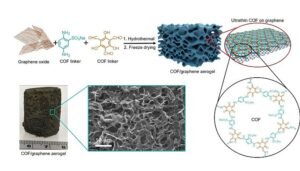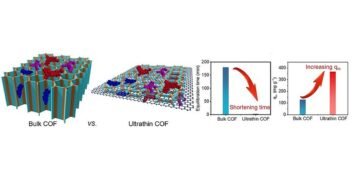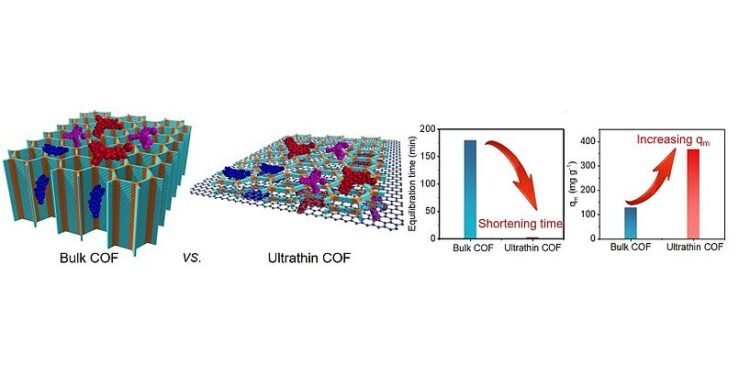Effective adsorbents for industrial (Nano-sponges to quickly clean wastewater) wastewater treatment are important to minimize potential environmental damage. In particular, organic dyes, as an important group of industrial pollutants, are usually very soluble in water, non-degradable and many are carcinogenic. Changxia Li and Freddy Kleitz from the Faculty of Chemistry of the University of Vienna and colleagues today present a new approach to design a new composite material consisting of a nano porous, ultra thin covalent organic framework (COF) anchored in graphene that is highly efficient. . to filter out organic impurities from water. The study was published in “Angewandte Chemie”.
“There are many ways, including activated carbon filters, to purify water today, but there is still room to improve the efficiency or absorptive capacity of the applications,” said first author and postdoctoral fellow. Researcher Changxia Li.

Freddy Kleitz’s group at the Institute of Inorganic Chemistry – Functional Materials develops new nano porous materials. Porous materials have a larger total surface area than a non-porous material for the same volume, and thus collect a particularly large number of molecules on the surface during adsorption.
Highly porous COF as a new class of materials Covalent organic structures (COFs) are a relatively new class of materials. They are particularly porous and at the same time have low density and light. Covalent means that their chemical bonds are formed by electron pairs between atoms (Nano-sponges with the ability to quickly clean wastewater).
The dyes the researchers examined in their aqueous model solution were about 0.8 to 1.6 nanometers in size. “We developed a new method to create COFs in a relatively environmentally friendly way, using water. In this way, we were able to produce small ‘sponges’ with designed pore sizes and pore shapes in the nanometer range, as well as a tailored negative surface charge, which is very selective in attracting positively charged target molecules, i.e. our dyes, from water,” the researchers said. “Like a sponge that absorbs water, in our case it’s pollutants.”
Backbone made of grapheme
When using bulk COF powder, the internal pores of the material are often inaccessible to pollutants due to the clogging of the pores at the outer edge, especially large pollutant molecules. The new composite material created by the researchers offers a completely permeable structure: To this end, the researchers grew COFs on thin graphene nanosheets. The combination of graphene – itself a 2D layer of carbon atoms – and a layer of COF, which is up to two nanometers thick, results in a compact, open 3D structure. An ultrathin layer of COF can reveal more adsorption sites than bulk COF powder.
On the other hand, the larger, honeycomb pores in the graphene network promote the transport of water through the filter material. “The large pores of the graphene network in combination with an ultra-thin COF layer with many adsorption sites therefore enable particularly fast and efficient wastewater treatment,” the researchers said. Due to the relatively low material input of graphene, as well as the possibility to use the composite material – after washing off impurities – as a filter, the development is also relatively profitable, they say.





































